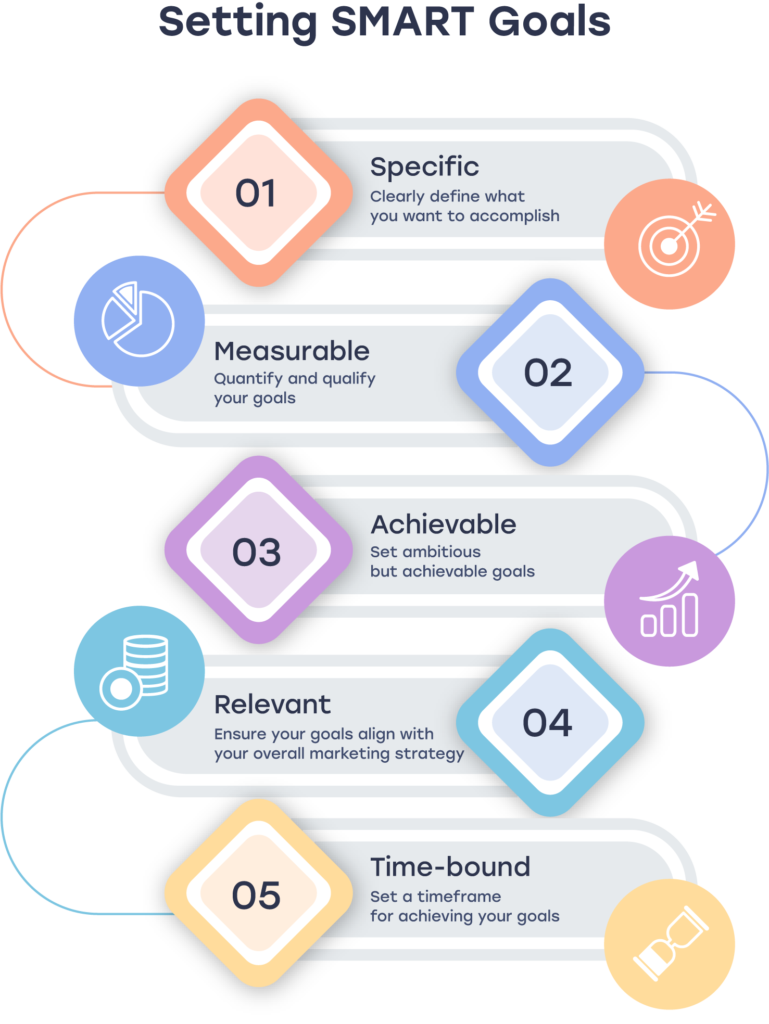share
Introduction: Measuring Up in the Cryptosphere
Remember the 2017 ICO boom? A memorable whitepaper and a few well-known tweets were all it took back then to skyrocket token values. That hype-fueled frenzy is a long cry from the crypto market today. The competition is tough, investors are clever, and success depends on using data-driven strategies.
However, determining success in the dynamic realm of cryptocurrency can be challenging. Conventional marketing measurements might not provide the whole picture. In a volatile market, how can you measure the emotion surrounding a brand? A sharp price decline can overpower encouraging word-of-mouth. In a day where social media bots are everywhere, how can you monitor real engagement? False likes and following counts don’t indicate genuine interest.
Fret not, crypto warriors! With the help of this blog post, you will be able to overcome these obstacles and discover the keys to efficient marketing measurement.
This blog post serves as your road map for overcoming these obstacles. We’ll explore the essential key performance indicators in cryptocurrency marketing services that count and provide you with the resources you need to monitor your campaigns successfully. By the time it’s all over, you’ll know how to evaluate your work, pinpoint areas that need work, and maximize the effect of your campaigns.
Understanding Your Goals: The Foundation of Measurement
Possessing an accurate understanding of your marketing objectives is essential before delving into the world of analytics and technology. Consider setting out on a road trip without a destination. While the data may indicate how far you’ve traveled, it is unable to determine whether you are traveling in the correct direction. Metrics related to cryptocurrency marketing that lack clear objectives are also of limited use.
Setting SMART Goals

The SMART goal framework provides a powerful tool for crafting effective marketing objectives. Here’s what it means:
- Specific: Clearly define what you want to accomplish. Is it increasing brand awareness, growing your Telegram community by 20% within the next quarter, or generating 1,000 qualified leads for your upcoming ICO? The more specific your goal, the quicker it will be to track progress and measure success.
- Measurable: Quantify and qualify your goals. Don’t just say “Increase website traffic.” Instead, aim for a 30% growth in unique visitors over the next two months. By setting quantifiable targets, you can accurately assess your campaign’s performance.
- Achievable: Set ambitious but achievable goals. Don’t aim for a million followers overnight if your project is still in its early stages. Be realistic and be patient about your resources and market potential. Success doesn’t lay at your feet overnight. Set achievable goals and keep your team motivated and focused.
- Relevant: Ensure your goals align with your overall marketing strategy and contribute to your project’s success. Don’t get caught up in vanity metrics like follower count if your true objective is driving token adoption.
- Time-bound: Set a timeframe for achieving your goals. This creates a sense of urgency and allows you to track progress effectively. Knowing you need to achieve 5,000 new Telegram members by the end of the month focuses your efforts and helps you identify adjustments needed mid-campaign
You create a clear road map for your marketing initiatives by defining SMART goals. As a result, you can choose the most applicable indicators to monitor your development and measure the success of your campaign. Assume you have a content marketing campaign with the SMART goal of producing 100 quality leads for your initial coin offering (ICO) – the importance of website traffic measurements like page views and unique visitors declines. Rather, you will concentrate on metrics like email signups and white paper downloads that show lead generation.
SMART goals essentially serve as a bridge between your overarching marketing plan and the particular measurements you’ll employ to gauge its effectiveness. By taking the time to define clear, measurable goals upfront, you’ll be well-equipped to navigate the data maze of crypto marketing and optimize your campaigns for maximum impact.
Key Metrics for Crypto Marketing: Unveiling the Performance Puzzle
Now that you have established your SMART goals, it’s important to examine the crucial metrics that will show how successful your cryptocurrency marketing initiatives are. We’ll look at a range of indicators in several categories to assist you gauge your goals’ success and comprehend how customers engage with your brand.
Website Traffic & Engagement: Understanding Your Audience
Your website serves as your crypto project’s online storefront. Visitors can learn more about your service, interact with your material, and possibly take action by downloading a white paper or subscribing to your newsletter here. Metrics about website traffic analysis can be used to gain important information about the effectiveness of content and audience interest.
- Unique Visitors: This metric tells you the number of individual users who visit your website within a specific timeframe. A rising number of unique visitors indicates growing brand awareness and potential audience expansion.
- Page Views: This metric reflects the total number of times any page on your website is loaded. High page views suggest users are exploring your content and finding it relevant to their interests. However, a low page view count coupled with a high number of unique visitors might indicate users aren’t finding the information they seek.
- Bounce Rate: The percentage of visitors to your website that leave after only viewing one page is measured by this metric. A high bounce rate may indicate several problems, including sluggish loading times, poorly designed websites, or irrelevant information. To keep people interested in your offerings and investigating more, aim for a low bounce rate.
- Average Session Duration: This statistic displays the average amount of time visitors spend on your website. An extended average session length indicates that consumers find your information interesting. On the other hand, a short session duration can be a sign of shallow or shallow content.
Together with your objectives, this website metrics analysis will provide you with important insights into the habits and content preferences of your audience. If you want to educate potential investors, you should give more weight to information that shows people are spending more time on your project and exploring its specifics – that is, content that boosts average session duration. On the other hand, you might concentrate on improving landing pages to lower bounce rates and promote sign ups if your objective is to collect email leads.
Social Media Engagement: Building a Community
Social networking sites are excellent resources for building brand loyalty, engaging with your cryptocurrency community, and increasing website traffic. The following are some crucial indicators to monitor your social media success:
- Likes, Comments, Shares: These basic engagement metrics indicate user interaction with your social media content. A high number of likes and comments suggests your posts are resonating with your audience and sparking conversations. Shares further amplify your reach, increase your engagement, and expose your brand to new potential followers.
- Mentions: This indicator counts the frequency with which your brand appears on social media, even when it isn’t referenced in a response, going beyond direct interactions. Monitoring mentions reveals sentiment toward your project that you may not have anticipated and helps you understand brand awareness.
- Follower Growth: This metric shows the number of new followers you acquire over time. Steady follower growth indicates your content is attracting new people and your brand is gaining recognition within the crypto space.
Metrics on social media interaction offer a glimpse into your audience’s perception of your brand. Do your postings spark meaningful conversations? This indicates a strong and engaged community. Are comments filled with questions? To answer those questions and prove your knowledge, think about writing instructional materials.
Beyond Engagement: Sentiment Analysis
Metrics on social media interaction give you insight into how your audience views your company. Are people having interesting debates about your posts? This suggests that the community is vibrant and powerful. Are there a lot of queries in the comments? Think about producing instructional materials to respond to such questions and show off your knowledge.
Community Growth & Engagement: Fostering Loyalty
A robust and active community is frequently the cornerstone upon which cryptocurrency initiatives flourish. Direct communication with your audience is made possible by platforms like Telegram and Discord, which also help to create a sense of community. The following are essential KPIs to monitor the well-being of your cryptocurrency community:
- Member Growth: This metric shows the number of new members joining your Telegram or Discord group. Consistent growth indicates your project is attracting new interest and building a community.
- Activity Levels (Messages Sent): This metric shows how engaged people are with your community as a whole. A large volume of messages exchanged points to engaged users and lively discussions. On the other hand, low activity levels could be a sign of indifference or trouble using the platform.
- Sentiment Analysis Within Communities: Sentiment analysis tools can be used to assess the atmosphere of your Telegram or Discord groups, much like social media analysis tools. Through the analysis of user message tones, you may pinpoint problem areas, quickly resolve negative feedback, and acknowledge and celebrate community accomplishments.
Conversions & Lead Generation:
Many crypto marketing campaigns aim to generate leads and drive conversions, such as email signups, white paper downloads, or exchange registrations. Here are some key metrics to track your progress toward these goals:
- Signups for Email Lists: Email address collection makes it possible to take care of potential prospects and communicate with them specifically. A rising email list is a sign of effective lead creation.
- White Paper Downloads: White papers are comprehensive documents that describe the technical features and goals of a project. Downloads indicate sincere interest from users or investments.
- Exchange Registrations: Keep tabs on the number of people signing up on cryptocurrency exchanges where your token is listed if you want to boost token adoption.
- Conversion Rate: This metric calculates the proportion of visitors to your website or landing page that complete a desired activity, such as downloading a white paper or joining your email list. A high conversion rate suggests that users are being successfully guided toward your objectives by your marketing activities.
You may evaluate how well your marketing strategies are producing quality leads and encouraging desired behaviors by monitoring conversion metrics. By examining which content or channels generate the highest conversion rates, you can maximize your return on investment (ROI) and adjust your approach.
Brand Awareness & Sentiment: Understanding Public Perception
Monitoring follower counts and social media mentions is not the only way to gauge brand awareness and sentiments. The following resources and analytics will help you learn more about how people in the cryptocurrency industry see your brand:
- Google Trends: You may monitor the volume of searches for your brand name or related keywords over time with this tool. A rise in search volume indicates rising consumer interest and brand awareness.
- Social listening platforms: These tools let you examine the sentiment underlying online discussions about your business, going beyond simple mentions. You can recognize favorable brand sentiment, respond to unfavorable reviews, and take part in pertinent industry conversations.
Understanding Public Perception:
Analyzing sentiment and brand awareness data can provide you with important information about how the public views your project. Positive sentiment encourages trust among users and potential investors and is a sign of successful brand growth. Negative feedback, on the other hand, can harm your project’s growth and reputation. One way to reduce reputational risks and preserve a positive brand image is to show transparency and take prompt action in response to unfavorable criticism.
A data-driven strategy is necessary in the always-changing world of cryptocurrency marketing. You may meet your marketing goals, refine your campaigns, and learn a lot about your audience by creating specific, measurable targets and monitoring the appropriate metrics. Keep in mind that your particular goals will determine which important indicators you prioritize. Do you prioritize raising brand awareness? Monitor Google Trends data and mentions on social media. Is generating leads your aim? Email signups and conversion rates turn into important KPIs.
You may successfully traverse the difficulties of crypto marketing and make sure the proper message is sent to the right audience with your project by making use of the data at your disposal. So, embrace data’s power, make goals, and start your journey toward profitable cryptocurrency marketing!
Equipping Yourself: Tracking Tools for Crypto Marketing Success
Now that you’re armed with a roadmap of key metrics, it’s time to explore the tools that will help you gather and analyze this valuable data. In the fast-paced world of crypto marketing, the right tools can make all the difference in optimizing your campaigns and maximizing your ROI.
Let us get a grasp on the website analytic powerhouses:
Google Analytics:
Any owner of a website has to have access to this industry standard. Google Analytics offers thorough data on user behavior, website traffic, and conversion rates. Your crypto project’s website can measure metrics like unique visitors, page views, bounce rate, and time on site by integrating Google Analytics with it. You may use this data to better analyze user engagement and pinpoint places on your website that need work.
Tools for Social Media Analytics:
The majority of popular social networking sites, such as Facebook Insights and Twitter Analytics, come with built-in analytics capabilities. These tools offer useful information on your social media performance, such as the demographics of your followers, reach, rates of engagement, and the effectiveness of your posts. You may customize your social media material to connect with your target audience and increase your reach by evaluating this data.
Going Beyond the Surface: On-Chain Analytics
Traditional website analytics provide a valuable starting point, but for crypto projects, delving deeper into on-chain data can be crucial. On-chain analytics tools allow you to track activity directly on the blockchain where your project operates. Here are some examples of how on-chain analytics can be leveraged in crypto marketing:
- Transaction Volume: Track the total amount of cryptocurrency being transferred on your blockchain. Increasing transaction volume suggests growing project adoption and user activity.
- Active Wallets: Monitor the number of unique wallets interacting with your project. A rising number of active wallets indicates expanding user engagement.
- Smart Contract Activity: Analyze specific metrics related to your project’s smart contracts, such as the number of users interacting with them or the total value locked (TVL) within your DeFi protocol.
Choosing the right on-chain analytics tool depends on the specific needs of your project. Popular options include Glassnode, Dune Analytics, and Nansen. These platforms allow you to explore a vast array of on-chain data and customize dashboards to track the metrics most relevant to your marketing goals.
Perfect Data Collection
It’s crucial to integrate your marketing tools with your website and social media platforms to ensure effective data collection and analysis. The majority of analytics tools come with simple integration options that make it simple for them to get information from your social media and website. This guarantees that you have a single repository for all of your marketing data and does away with the necessity for manual data entry.
You may obtain a thorough grasp of your crypto marketing performance by utilizing a blend of on-chain analytics platforms, social media analytics tools, and website analytics. Recall that even the most effective tools are meaningless without careful application and evaluation. Make sure you comprehend the data you are gathering and how it connects to your marketing objectives.
With the right tools and data-driven insights, you can navigate the ever-evolving crypto marketing landscape and achieve long-term success for your project.
Optimizing Your Campaigns: Transforming Data into Action
The journey continues once the data is gathered. You must constantly evaluate the information you collect to turn your findings into improvements that can be put into practice if you want to maximize the impact of your Bitcoin marketing campaigns. Here’s how to make data analysis an effective tool for optimizing campaigns.
Analyzing data shouldn’t be done just once. Plan recurring evaluations of your most important KPIs to spot patterns and potential development opportunities. Are you getting little response to your postings on social media? Is there a high bounce rate on your website? These observations serve as your optimization road map. You can make sure your campaigns are operating at their best by regularly reviewing your data and making changes in response to what you uncover.
A/B Testing:
You can compare numerous versions of your marketing materials using A/B testing to determine which ones your audience responds to the best. This applies to some components, including:
Headlines: Try a variety of headlines for your social media posts and website landing pages to discover which ones draw in more readers and encourage more click-throughs.
Visuals: Try changing the photos or videos in your marketing materials and observe which ones lead to the most interaction.
Calls to Action (CTAs): Test different CTAs (e.g., “Download Now” vs. “Learn More”) to see which ones encourage users to take the desired action.
You may determine the components that most appeal to your target audience and improve your marketing materials for best results by running A/B tests and evaluating the outcomes.
Marketing Attribution:
Determining which particular marketing initiatives are responsible for conversions can be challenging in a multi-channel marketing environment. With the aid of marketing attribution models, you may comprehend the “customer journey” and give recognition to the touchpoints that had an impact on a user’s decision to convert. Here’s a concise example:
- A user sees a social media ad about your project (touchpoint 1).
- They click on the ad and visit your website (touchpoint 2).
- They read a blog post about your project (touchpoint 3).
Finally, they sign up for your email list (conversion).
In this scenario, depending on the attribution model you use, credit for the conversion might be shared between all three touchpoints, or given more weight to the touchpoint that directly preceded the conversion (email list signup).
By understanding which marketing channels are contributing most to conversions, you can optimize your budget allocation and focus your efforts on the channels that deliver the highest ROI.
Continuous improvement is the key. The cryptocurrency marketing industry is dynamic and always evolving. You can develop a better understanding of your audience and make sure that your campaigns are always changing to provide the best results by routinely evaluating your data, A/B testing your marketing materials, and using marketing attribution models.
Keep in mind that learning, changing, and optimizing based on data-driven insights is a continuous process for successful crypto marketing. To see your cryptocurrency project soar to new heights, embrace the power of data analysis and make necessary campaign adjustments depending on your results!
Conclusion: Navigate the Crypto Marketing Maze with Confidence
A data-driven strategy is essential for effective marketing in the rapidly evolving cryptocurrency space. A strategy for your marketing endeavors can be established by clearly defining your SMART goals. Your unique objectives will determine which critical metrics you monitor, but important information to take into account includes website traffic, social media engagement, conversion rates, and brand sentiment. You may collect and evaluate this important data with the use of strong tools like Google Analytics, social media analytics platforms, and on-chain analytics platforms.
However, gathering data is only the first stage. Ongoing analysis and campaign optimization are where the real magic is found. You may improve your campaigns and increase their impact by routinely analyzing your stats, conducting A/B testing of various components, and comprehending marketing attribution.
So, move forward! Put these tactics into practice to turn your crypto marketing endeavors from a wild guess into a data-driven success story. Measure, examine, adjust, and then watch as your creation realizes its greatest potential!








